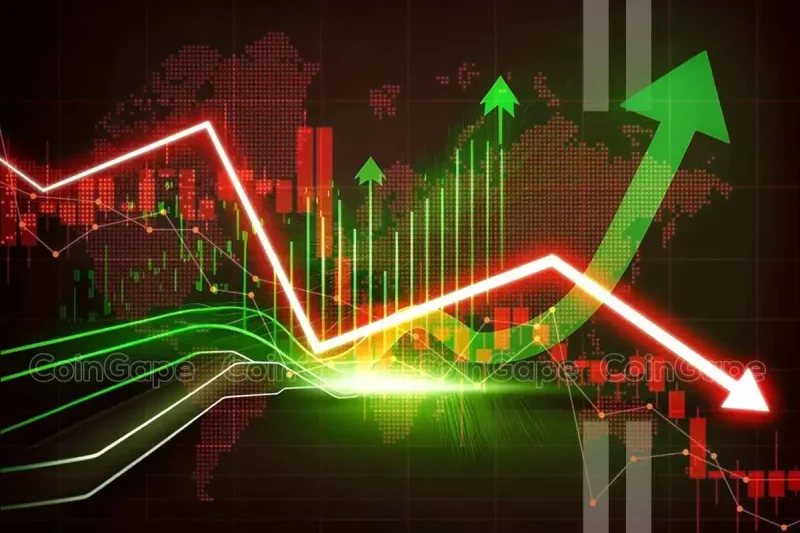Anyone who invested $1,000 in Bitcoin on US election day in 2016 saw a phenomenal return to over $10,000 the following year. This heavily suggests how connected the crypto world can sometimes be with elections and gives an inkling into what may lie ahead in this election cycle.
Looking ahead to how the incoming president will affect cryptocurrency, however, it’s difficult to say precisely how policy could shape markets. Anyone who says he can predict markets is lying, but certain trends do have a tendency to repeat.
Among those are the usual post-election market reaction when a candidate assumes the presidency and the longer-term growth patterns exhibited by major cryptocurrencies like Bitcoin and Ethereum. Historically, how have Bitcoin and Ethereum prices reacted in the wake of presidential elections?
2024 US Election Poised to Ignite New Crypto Bull Run
US election days in the past have always carried great weight in financial markets, and crypto has become increasingly sensitive to political dynamics. As seen, election results tend to precipitate speedy and wild responses from the market; this year’s 2024 race is no exception, oozing signs of similar trends.
Historically, major cryptocurrencies have experienced significant market capitalization gains following elections, according to Grayscale latest report. Following the 2016 and 2020 elections, Bitcoin and Ethereum entered significant bull runs that began quickly and lasted for about a year.
The 2016-2017 period was remarkable: Bitcoin surged from around $703 in 2016 to an astonishing $7,141 just one year later. An investment of $1,000 in Ethereum on US Election Day 2016 would have reaped more than $25,000 by the following year. In the 2020 to 2021 cycle, Bitcoin climbed from $13,550 on Election Day 2020 to an astonishing $63,254 within a year. Similarly, investors who entered Ethereum with $1,000 on Election Day 2020 saw their holdings scale to over $10,000 by the following year.
While the 2020 to 2021 period was impactful, it did not quite match the gains of the 2016 cycle. Still, these patterns may underpin how US elections catalyze major upward movements in crypto prices and add to the anticipation of how the 2024 race may influence the next market phase.
Now, with more than $160 million invested in federal election campaigns, crypto lobbyists are driving bipartisan support in Congress.
Divergent Crypto Views of Trump and Harris
A centerpiece of the 2024 US election has become the starkly divided opinions of its front-runners on cryptocurrency. Former President Donald Trump has emerged as perhaps the most ardent advocate of digital assets, even committing to making the US the “crypto capital of the world.” He has even promised support for Sen. Cynthia Lummis’s proposal for a US Bitcoin reserve.
If Trump were to win, some analysts say Bitcoin’s price would soar, with the more optimistic forecasts suggesting its price could reach six figures under a pro-crypto administration. However, latest reports from Polymarket show Trump’s chances of a presidential victory dropping by over 4% just three days before the announcement of the results.
Vice President Kamala Harris has adopted a very different approach. While not voicing a clear opinion about cryptocurrency, her administration is receptive to working with tech industry leaders forging forward into blockchain innovation. The Harris team represents a welcoming perspective toward the development of emerging technologies, including blockchain, but without the widely broad reforms expressed by Trump.
While the president does not have direct authority over the crypto markets, that office indirectly holds enormous influence. Regulation mainly falls under the purview of the SEC, CFTC, and the Treasury Department. The president can also influence federal policy by issuing executive orders requiring those agencies to study cryptocurrency or create guidelines on its use.
Historically, US Election of presidents and their political parties have had minimal direct impacts on crypto prices. Events that change markets often involve broader uncertainties or crises, such as the collapse of major exchange FTX, which sent shockwaves through the market and led to the price dip.
Bitcoin and Ethereum Drive Crypto Growth Amid Election-Induced Volatility
Since the phenomenon’s inception, Bitcoin and Ethereum have been at the heart of crypto market growth. Today, the combined market capitalization has grown from zero in 2008 to $2.31 trillion, which explains it all. The future of digital market, however, is not all about Bitcoin and Ethereum. Very important drive comes from the altcoins as well. As per the latest reports, top altcoins like XRP, DOGE, TRUMP, MAGA, and TREMP are showing the potential for a massive rally if Donald Trump wins the US election.
The arrival of a new president presumably reduces uncertainty in markets, which can be one reason for a post-election boost in crypto, even when that administration is not considered pro-crypto. Crypto remains volatile, and giant swings are relatively common, like the 65% drop in Bitcoin in early 2018.
In the period leading to the election of 2024, crypto markets might continue becoming increasingly volatile as investors react to the results of polling and news in campaigns, often in defensive ways. Economic factors, such as inflation and interest rates, make up an essential part of crypto’s destiny.
Whatever the result of the US election, crypto influence and its adoption will have a continuous upper trend in the long run.
The post Could the US Election Trigger a Crypto Market Boom or Bust? appeared first on CoinGape.

